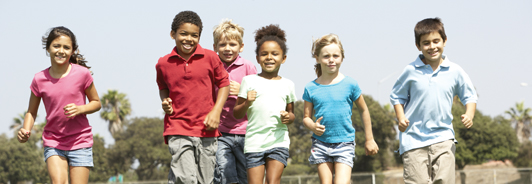Making the Case for a Schoolwide Movement
The science behind physical activity and learning in schools
By Russell “Russ” Carson, Ph.D., who studies and advocates for physical activity in schools, is associate professor of Sport & Exercise Science at UNC.
We are beginning to realize what scientific research supports: that learning outcomes and physical activity aren’t mutually exclusive.
It’s quite the opposite.
K-12 schools that embrace an environment for physical activity find the initiatives pay off in the classroom — to say nothing of their health benefits as U.S. childhood obesity rates have doubled in the past 30 years, affecting nearly 13 million youth, and more prevalent among Hispanic and non-Hispanic black children.
A steady stream of literature over the past decade shows that quality physical education classes position students to perform better academically. Active children have better functioning brains, particularly in neural activity and structures foundational for learning, and in attention and working memory. These brain health effects are seen even after a single session of physical activity. For example, brain scans show more brain activity following 20 minutes of walking compared with sitting for 20 minutes. Students may resort to cramming for a test, but these findings suggest that a better tactic would be to move around beforehand.
Now a national movement is under way as schools promote lifelong physical health and well-being.
Whole-school approaches, such as the Comprehensive School Physical Activity Program (CSPAP), offer promising ways for children to accumulate daily physical activity. A CSPAP cornerstone is for every school to be equipped with a trained physical activity leader who spearheads and facilitates school physical activity initiatives. Many resources, funding opportunities, training workshops, and a national collaborative of support help mobilize schools and school leaders to increase daily physical activity opportunities.
In Colorado, a host of education, health, community organizations and professionals are taking action. Nearly 200 of these leaders convened at UNC for a Schulze Speaker Series titled “Active Kids Do Better: Building Healthier Generations of Youth through Active Learning Schools.” The interdisciplinary nature of building healthy generations of youth was discussed. UNC efforts related to this movement were showcased — particularly surrounding the recent launch of one of the first master’s programs to focus on whole school physical activity promotion and leadership (UNCactiveschools.com).
Two UNC graduates were distinguished speakers who presented the successful programs being implemented in St. Vrain Valley School District (see “UNC Grads Keeping Kids Moving in School).
As more schools latch on, learning and health initiatives and outcomes need not be treated as mutually exclusive. Science tells us and practice shows us just how flawed such an approach can be.





